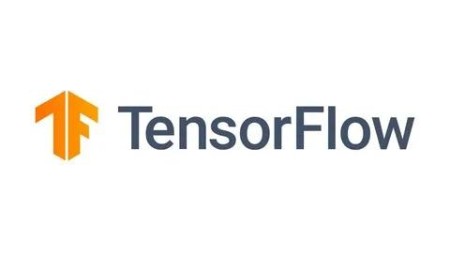Most Commented
Tensorflow: Basic To Advanced Training




Description material

Tensorflow: Basic To Advanced Training
Published 11/2024
MP4 | Video: h264, 1920x1080 | Audio: AAC, 44.1 KHz
Language: English | Size: 687.81 MB | Duration: 4h 33m
Flexible, Scalable, Open-Source Machine Learning Framework
What you'll learn
Core TensorFlow concepts from setup to model building, enabling them to confidently create machine learning projects.
Techniques for building CNNs and RNNs for image, language, and sequence data, equipping them to tackle various ML problems.
Skills to deploy TensorFlow models to production, including scaling with distributed computing and deploying on mobile.
Practical experience with real-world ML applications, building models for image recognition, sentiment analysis, and more.
Requirements
Basic programming knowledge, ideally in Python
Understanding of fundamental math concepts like linear algebra and probability
Familiarity with machine learning basics is helpful but not required
A computer with internet access for installing TensorFlow and coding projects
Description
This course offers a comprehensive journey into TensorFlow, guiding learners from the basics to advanced applications of machine learning and deep learning with this powerful open-source framework. Starting with an introduction to machine learning and the unique capabilities of TensorFlow, students will gain foundational knowledge that sets the stage for more complex concepts. The course begins with installation and setup instructions to ensure every student is equipped with the necessary tools and environment for TensorFlow development. Early modules cover the essential building blocks of TensorFlow, including tensors, operations, computational graphs, and sessions. Through these topics, students will understand the core components of TensorFlow and how to utilize them effectively for simple projects and data operations.As the course progresses, learners dive deeper into neural networks, exploring how to build, train, and optimize basic models. The intermediate section introduces Keras, the user-friendly API for TensorFlow, allowing students to design and train complex models more intuitively. Topics like convolutional neural networks (CNNs) and recurrent neural networks (RNNs) provide hands-on experience with real-world data types, such as images and sequences. The course then transitions to advanced topics, covering essential skills for deploying and scaling models. Students will learn to save, load, and serve TensorFlow models, enabling them to apply their knowledge in production environments. They'll also explore distributed TensorFlow for scaling applications across multiple devices and TensorFlow Extended (TFX) for building end-to-end machine learning pipelines.With practical projects and real-world applications woven throughout, students will have the chance to build models for tasks like image classification, sentiment analysis, and time series prediction, solidifying their skills through hands-on practice. By the end of the course, learners will be equipped not only with the technical knowledge but also the practical experience needed to implement, deploy, and manage TensorFlow models in professional environments. This course is ideal for anyone looking to advance their career in data science, machine learning, or artificial intelligence, empowering them with the expertise to tackle complex challenges in today's data-driven world.
Overview
Section 1: Introduction to Machine Learning and TensorFlow
Lecture 1 What is Machine Learning?
Lecture 2 Introduction to TensorFlow
Lecture 3 TensorFlow vs. Other Machine Learning frameworks
Lecture 4 Installing TensorFlow
Lecture 5 Setting up your Development Environment
Lecture 6 Verifying the Installation
Section 2: Basics of TensorFlow
Lecture 7 Introduction to Tensors
Lecture 8 Tensor Operations
Lecture 9 Constants, Variables, and Placeholders
Lecture 10 TensorFlow Computational Graph
Lecture 11 Creating and Running a TensorFlow Session
Lecture 12 Managing Graphs and Sessions
Lecture 13 Building a Simple Feedforward Neural Network
Lecture 14 Activation Functions
Lecture 15 Loss Functions and Optimizers
Section 3: Intermediate TensorFlow
Lecture 16 Introduction to Keras API
Lecture 17 Building Complex Models with Keras
Lecture 18 Training and Evaluating Models
Lecture 19 Introduction to CNNs(Convolutional Neural Networks)
Lecture 20 Building and Training CNNs with TensorFlow
Lecture 21 Transfer Learning with Pre-trained CNNs
Lecture 22 Introduction to RNNs(Recurrent Neural Networks)
Lecture 23 Building and Training RNNs with TensorFlow
Lecture 24 Applications of RNNs: Language Modeling, Time Series Prediction
Section 4: Advanced TensorFlow
Lecture 25 Saving and Loading Models
Lecture 26 TensorFlow Serving for Model Deployment
Lecture 27 TensorFlow Lite for Mobile and Embedded Devices
Lecture 28 Introduction to Distributed Computing with TensorFlow
Lecture 29 TensorFlow's Distributed Execution Framework
Lecture 30 Scaling TensorFlow with TensorFlow Serving and Kubernetes
Lecture 31 Introduction to TFX(TensorFlow Extended)
Lecture 32 Building End-to-End ML Pipelines with TFX
Lecture 33 Model Validation, Transform, and Serving with TFX
Section 5: Practical Applications and Projects
Lecture 34 Image Classification
Lecture 35 Natural Language Processing
Lecture 36 Recommender Systems
Lecture 37 Object Detection
Lecture 38 Building a Sentiment Analysis Model
Lecture 39 Creating an Image Recognition System
Lecture 40 Developing a Time Series Prediction Model
Lecture 41 Implementing a Chatbot
Section 6: Further Learning and Resources
Lecture 42 Generative Adversarial Networks (GANs)
Lecture 43 Reinforcement Learning with TensorFlow
Lecture 44 Quantum Machine Learning with TensorFlow Quantum
Lecture 45 TensorFlow Documentation and Tutorials
Lecture 46 Online Courses and Books
Lecture 47 TensorFlow Community and Forums
Section 7: Summary of Tensor Flow
Lecture 48 Summary of Key Concepts
Lecture 49 Next Steps in Your TensorFlow Journey
Aspiring Data Scientists and ML Engineers who want to build a solid foundation in TensorFlow for real-world machine learning projects,Developers and Programmers interested in expanding their skills to include machine learning and neural networks,Students and Professionals in data science, AI, or related fields, looking to add TensorFlow to their toolkit,Self-Learners who enjoy hands-on projects and are ready to dive into practical, scalable applications in machine learning

Join to our telegram Group
Information
Users of Guests are not allowed to comment this publication.
Users of Guests are not allowed to comment this publication.
Choose Site Language
Recommended news
Commented



![eM Client Pro 9.2.1735 Multilingual [Updated]](https://pikky.net/medium/wXgc.png)



![[PORTABLE] Adobe Photoshop 2022 23.5.1.724 (x64) Multilingual](https://i.postimg.cc/Qd3YgCX8/Adobe-Photoshop-2022.jpg)


![Movavi Video Editor 24.0.2.0 Multilingual [ Updated]](https://pikky.net/medium/qhrc.png)

